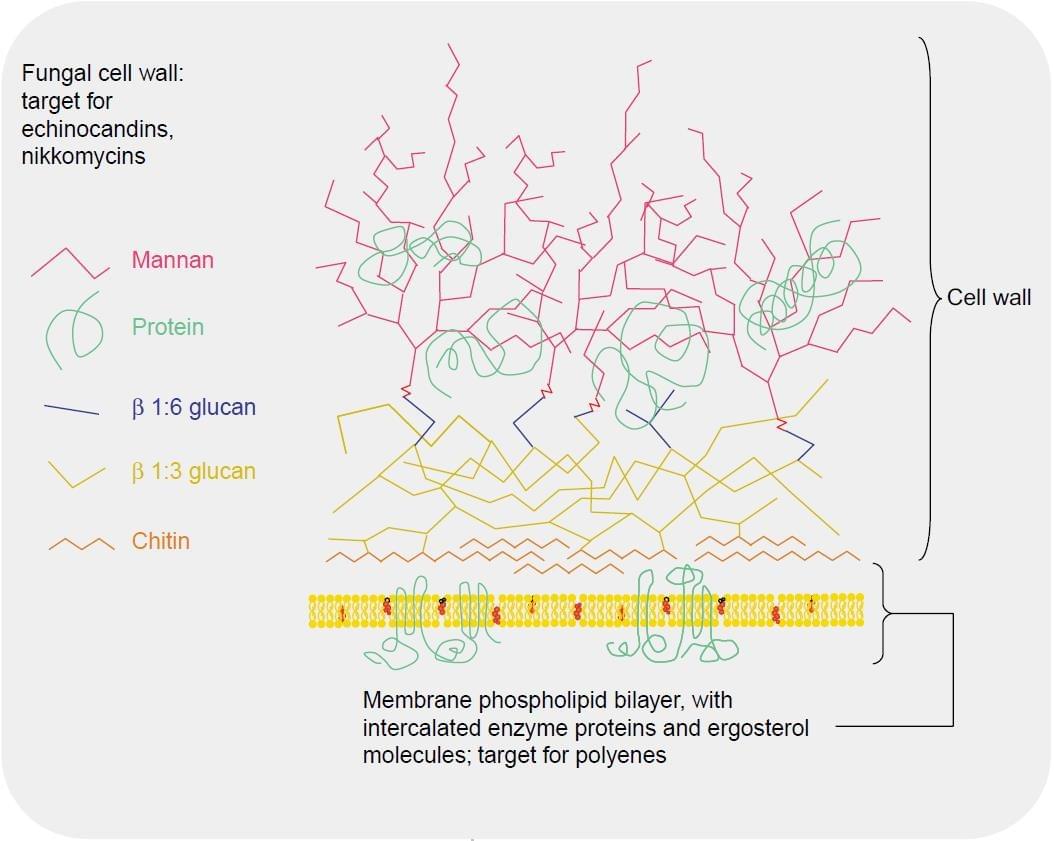As one of the leading-edge scientific institute and market pioneer, Creative Biolabs introduces our exclusive antifungal mechanism of action determination services focusing on interference with the fungal cell wall.
Fungal cell wall poses as one predominant therapeutic target for most clinical antifungal agents. Generally, it consists of a basal layer of chitin, a body of glucans and mannoproteins that decorate the surface. The composition of cell wall varies to different fungus species and different growing stage. Notably, the cell wall of fungi plays a crucial role in morphology maintenance, cell rigidity, intracellular homeostasis, ion transport and filtration, antigenic presentation, host interaction, and resistance generation. Interference with fungal cell wall can cause fatal consequences. Therefore, fungal cell wall represents an ideal target option, which is a common structure among fungi species, highly pathogenic to human, also of great importance to its viability.
 Figure 1. Antifungal agents targeting fungal cell envelope. (Odds FC et al. 2003)
Figure 1. Antifungal agents targeting fungal cell envelope. (Odds FC et al. 2003)
To better illustrate the antifungal mechanism of action targeting cell wall, Creative Biolabs has built up an integrated platform combining multiple sophisticated assays and high throughput technologies. We provide detailed investigation service in the following aspects to help characterize your compound of interest:
Interference with Chitin Synthesis
Chitin constitutes the basal wall skeleton and participates in fungal cell division and maturation. As chitin synthesis and degradation is a dynamic process, interference with both chitin synthetase and chitinase will lead to disruption of chitin homeostasis, and eventually wall damage. Multiple enzymes are known to involve this process. Aided by our high content phenotype monitor and fluorescent staining, changes in wall chitin composition will be detected. Subsequent enzymatic assay and interaction mapping will enable further validating the specific enzyme and the exact interaction mode.
Interference with Glucan Synthesis
Cell wall glucan, mainly beta-glucan, governs critical functions such as morphology maintenance and osmotic modulation. Usually, beta-1,6-glucan locates on the outer layer while beta-1,3-glucan in the inner layer. Agents disturbing beta-glucan synthesis, including aculeacins, echinocandins, papulacandins, acidic terpenoids, can render fungal cells osmotically sensitive to lysis and death. With comprehensive knowledge of glucan biosynthesis pathways and key enzymes, we can generate detailed profiles of glucan-related MOA in molecular levels.
Interference with Wall Stability
Fungal cell wall synthesis is a dynamic process which is constantly remodeling in response to environment conditions and cell cycle progression. There are several pivotal signaling pathways ensuring cell wall synthesis and integrity, e.g. PKC, HOG, MAPK pathways and Ca2+-calcineurin pathway. Perturbing these pathways is a potential antifungal mechanism of action. Moreover, polymerization of cell wall carbohydrates resulted from substances like uridine di-phospho sugars is another attractive target that requires further elaboration.
Based on our unparalleled technique platform, Creative Biolabs is confident in delivering compelling results to determine the mechanism of action of your test compound.
For more detailed information, please feel free to contact us or directly sent us an inquiry.
Reference
-
Odds FC, Brown AJ, Gow NA. (2003) “Antifungal agents: mechanisms of action.” Trends Microbiol. 11(6):272-279.
For Research Use Only.

 Figure 1. Antifungal agents targeting fungal cell envelope. (Odds FC et al. 2003)
Figure 1. Antifungal agents targeting fungal cell envelope. (Odds FC et al. 2003)